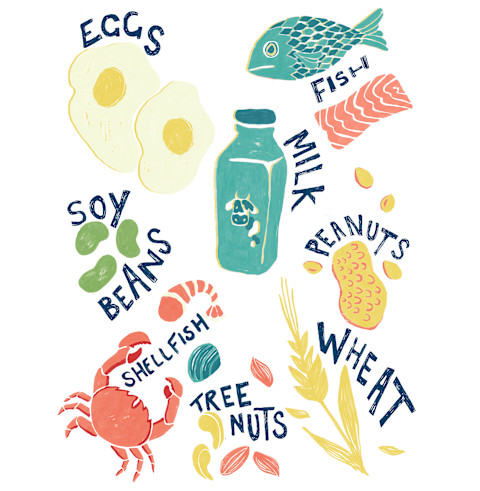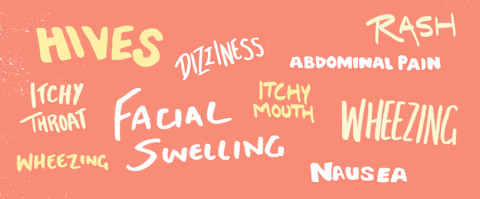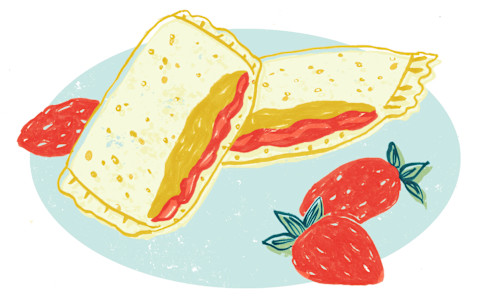
Since 2014, Target’s Made To Matter program has highlighted brands with natural, organic, sustainable products. This year, the retailer is stepping it up a notch by challenging its partners to innovate across five key areas that impact the environment and the day-to-day lives of shoppers.
Today, we’re diving into the dietary restrictions category, and we called on a leading voice on food allergies, Nicole Cogan, to help us unpack the complex issue.
Food allergies can manifest themselves in many different ways, and they really can take over your life—especially if left undetected. Take the story of Nicole Cogan, a NYC-based food and lifestyle blogger who lived with undiagnosed gluten and dairy allergies for years.
"Before I was diagnosed with food allergies, I was chronically sick. From strep throat and the flu to waking up in the middle of the night doubled over in stomach pain and unexplained 'seasonal allergies', there was always something wrong. And worse, I embraced this life as normal," Cogan explains.
Since discovering her food sensitivity seven years ago, Cogan's symptoms have completely subsided and she's able to live the active lifestyle her allergies kept her from before. But getting to this point wasn't exactly easy.
"Although I've always been a relatively healthy eater, my diet used to feature toast or a bowl of cereal for breakfast, a sandwich or wrap for lunch, and protein with pasta or some form of bread for dinner. It was extremely difficult to cut out certain foods—pizza in particular— and there are some tricky, less obvious sources gluten I still need to look out for. Soy sauce and salad dressing are two that come to mind right away!" she says.
However, with the help of a variety of gluten- and dairy-free products, she's finding a bright side to the seeming setback.
"Prior to going gluten-free, I never cooked. The extent of my culinary abilities was whipping up some pasta or throwing together a healthy wrap. Now, cooking has become like a therapy to me. I'm pretty much a kid in a candy store when I go grocery shopping, and I love taking classic dishes and adding a unique twist to them. For example, baked eggs ... in an avocado!"
Her allergy is catapulting her into a healthier lifestyle that's full of nourishing, whole foods.
"Vegetables were a scary, foreign concept to me back in my gluten-eating days. I mean, why eat veggies when you can enjoy chicken parmesan or a croissant? Now, the excitement I have over roasted brussels sprouts, carrots, and cauliflower trumps the excitement I once had over these tasty, gluten-filled foods."
And according to Cogan: "Just because your life is affected by allergies doesn’t mean your lifestyle should be."
Now that you have a taste of Nicole’s story, here are some mbg-approved resources to give you a sense of how to diagnose and live with a food allergy. Even if you don’t have allergies, we hope that you learn a thing or two about peanuts along the way.
mbg Unpacks The Issue
The Mysterious Trend

Today, an estimated 15 million Americans live with some sort of food allergy. This number is growing faster than ever before, but there’s no clear answer as to why. Children are particularly susceptible to food allergies, with 1 in 13 kids in America now reported as having them.
The Culprits
Though more than 160 foods can cause allergies, these are the eight most common ones. Together, they’re responsible 90 percent of all reactions. The law requires that they are clearly listed on ingredient labels, even if they’re only present tiny amounts as a color or spice additive.

The Nutty Research
Peanut allergies in particular are becoming more prevalent in America and the number of children who have them has more than tripled in the last decade. Here’s the lowdown on the peanut-centric research going on today:
Tricking the system: A counter-intuitive treatment approach, immunotherapy involves placing teeny tiny amounts of peanuts under the tongues of kids who suffer from peanut allergies. Larger and larger doses are gradually introduced over the course of months, and children are considered “desensitized” once they can eat 10 peanuts a day without a reaction. Though controversial, this technique has proven successful in about 8 out of 10 cases.
Peanuts and Pregnancy: Experts used to think that women who ate peanuts during pregnancy were more likely to give birth to children with peanut allergies, but recent studies have found that it may be just the opposite. Now, expecting moms are not told to cut out the nut during pregnancy, but more research is still needed.
Showing The Signs?
Though not super common, it is possible to develop food allergies later in life. (About 15 percent of people with food allergies start having them after the age of 18.) Here are some more signs you may be having an allergic reaction to your food.

Cut It Out
Think you have a food allergy? Visit your doctor to get an allergy test, or try out an elimination diet at home and see what your body tells you. Here’s one from one of our favorite functional medicine doctors, Dr. Robin Berzin.
1. Make a list of symptoms you feel on a daily basis: Bloated? Skin issues? Low energy? Write ‘em down!
2. Go 23 days without gluten, dairy, eggs, soy, fast food, or alcohol. (Don’t worry! You can still eat lean protein, vegetables, legumes, nuts, seeds, seaweeds, and gluten-free grains like quinoa.)
3. On day 24, reintroduce ONE of the food groups you cut out and see how you feel over the next 48 hours. If you have no reaction after two days, eat that same food again and take note of how you feel once more.
4. Repeat step three with the remaining food groups until you’ve reintroduced all of them. Again, pay special attention to how your body feels each time.
Made To Matter
These Made to Matter brands are dreaming up creative ingredient swaps to make healthy, natural products for children with allergies and dietary restrictions. They make for some amazing snacks for every single taste and diet.

Got kids with peanut allergies? Try these…
Annie’s Homegrown: Annie’s new Pea B&J (no, not a typo) replaces peanut butter with golden pea butter to give kids with peanut allergies a chance to enjoy the famed lunchtime staple.

Bitsy's Brainfood Smart Crackers are made in a peanut and tree nut-free facility and have a half serving of veggies in each serving of crackers.
For gluten-free little ones, grab one of these…

Envirokidz: EnviroKidz’s new Mixed Berries Granola Bites are an on-the-go snack that are gluten-free, low in sugar, organic and Non-GMO Project verified (and they're seriously yummy for adults too). Like all Nature’s Path EnviroKidz products, 1 percent of sales are donated to endangered wildlife conservation and education programs, which has helped raise $2.33 million for various wildlife projects.
